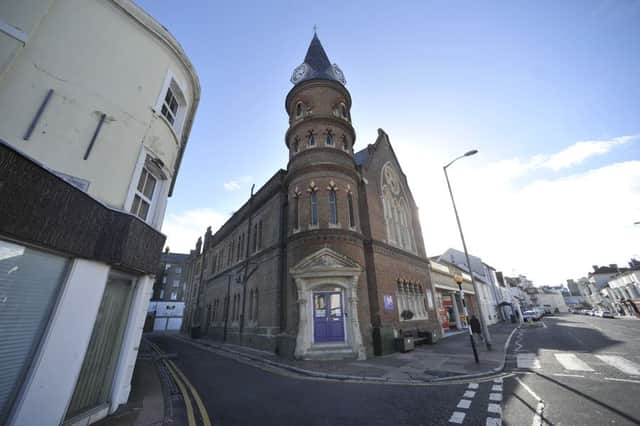Eastbourne building added to National Heritage List in 2017


The Leaf Hall in Seaside, described by historians as an impressive building in Continental Gothic style with a landmark circular corner tower, was built as a working men’s institute in the 1860s and given a Grade II listing.
A spokesperson at Historic England said the reason for the designation was that the Leaf Hall was a “rarity of building type”.
Advertisement
Hide AdAdvertisement
Hide Ad“The Leaf Hall, an 1863-1864 purpose-built working men’s institute in Continental Gothic style designed by the architect Robert Knott Blessley, is listed at Grade II for its architectural interest: an impressive and varied building constructed of polychrome brickwork with Bath stone dressings, and includes a landmark four stage circular clock tower.
“It is also designated for its degree of survival: little altered externally and interior features include the large hall with arch-braced roof and gallery and circular staircase; its historic interest: social historical interest for improving the lives of the local working classes and providing entertainment and intellectual stimulus more generally and rarity of building type: only a small number of working men’s institutes are listed nationally and Leaf Hall is comparable in date, quality and degree of survival.”
The Hall was built in 1863-1864 and funded by William Laidler Leaf, a London merchant, philanthropist and supporter of the Temperance Movement, who was appalled by the lack of social provision in Eastbourne’s fishermen’s quarter.
The foundation stone stated the building’s purpose was ‘to promote the social, moral and spiritual welfare of the working classes of Eastbourne’. It included a coffee room, lending library and reading room, smoking room, a lecture room to accommodate 200 with an orchestral gallery, and a skittle yard. At the time it was built there was no local theatre so the large hall was also used for visiting drama companies and lectures and ‘penny reading concerts’. For example General Tom Thumb appeared there for five performances in 1865. The building was also depicted in a painting, The Fishmarket Eastbourne of 1868.